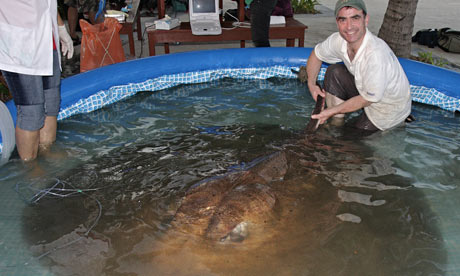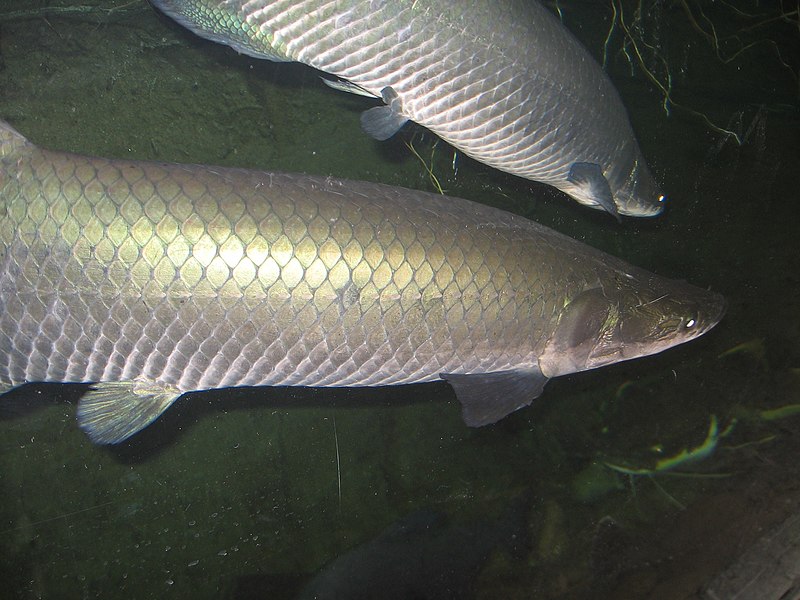Eileen here. A lot of people who come into our store see fish like our lionfish and scorpionfish and ask if they are poisonous. The answer? Technically, no. They’re venomous.
People also see warnings on some cucumbers, Sea Apples and Boxfish that they are poisonous and wonder if they might get a painful bite or sting. The answer? Probably not. They’re poisonous.
So, what’s the difference that makes the lionfish venomous but the boxfish poisonous? The key is all in how the toxin is delivered. The term “toxin” simply means a harmful substance produced naturally by an organisms and is used for both venomous and poisonous animals. Venomous animals inject their toxin into their target using spines (lionfish, stonefish, rabbitfish), teeth (sea snakes, Blue Ring Octopus), or specialized stinging cells known as nematocysts (jellyfish, anemones, some corals). Some of these animals use their venom to hunt; jellyfish and anemones paralize whatever prey is unfortunate enough to end up in their tentacles before they draw the prey to their mouth. Others like the lionfish and rabbitfish only rely on their venomous spines as defense against being preyed upon themselves. This venom can range from very mild as in the case of anemones to fatal. The Blue Ring Octopus is one of the most toxic animals on the planet and has no known antivenom. People who are sensitive to bee stings are much more likely to have a severe reaction to common venomous animals in the aquarium trade like lionfish and anemones.
 Poisonous animals like boxfish, puffers or sea cucumbers, on the other hand, rely on their target absorbing the toxin. This can happen across any membrane – through the skin or gills, in the stomach or digestive tract, even in the lungs. Poison is used almost exclusively as a defense mechanism. Puffers and boxfish have special toxin in their bodies – usually the liver, ovaries and skin – that they can release when they are stressed to hopefully deter any possible predators. Unfortunately, in a closed system like an aquarium, this toxin can eliminate an entire tank – including the puffer or boxfish itself. Some groupers like the Clown Grouper also have a similar toxin in their slime coat. Cucumbers, especially the large Sea Apples, can also poison a tank if they are stressed, picked on or dying. These animals can be deadly in an aquarium but aren’t much of a threat to aquarists; if in doubt, use gloves when handling any of these animals, especially with any open wounds or cuts.
Poisonous animals like boxfish, puffers or sea cucumbers, on the other hand, rely on their target absorbing the toxin. This can happen across any membrane – through the skin or gills, in the stomach or digestive tract, even in the lungs. Poison is used almost exclusively as a defense mechanism. Puffers and boxfish have special toxin in their bodies – usually the liver, ovaries and skin – that they can release when they are stressed to hopefully deter any possible predators. Unfortunately, in a closed system like an aquarium, this toxin can eliminate an entire tank – including the puffer or boxfish itself. Some groupers like the Clown Grouper also have a similar toxin in their slime coat. Cucumbers, especially the large Sea Apples, can also poison a tank if they are stressed, picked on or dying. These animals can be deadly in an aquarium but aren’t much of a threat to aquarists; if in doubt, use gloves when handling any of these animals, especially with any open wounds or cuts.
Whether venomous or poisonous, harmful or peaceful, the keywhen dealing with any animals is knowing what they are capable of and how to handle them properly. Being able recognise when an animal is stressed or how it defends itself is important in knowing how to keep that animal, its tankmates and yourself safe and happy.
 That Fish Blog – Aquarium Advice and Information
That Fish Blog – Aquarium Advice and Information

 The Stingray that Ian Caught is thought to be one of the largest fish ever caught of rod and reel. The Giant Freshwater Stingray (Himantura chaophraya) was caught in Thailand’s Maeklong River while on a research expedition. This stingray was estimated to be over 265kg (584lbs) and over 3.5m long. Some reports exist of these giants reaching sizes of 16.5 feet (5 meters) long and weighing up to 1,320 pounds (600kg). That is a big fish!
The Stingray that Ian Caught is thought to be one of the largest fish ever caught of rod and reel. The Giant Freshwater Stingray (Himantura chaophraya) was caught in Thailand’s Maeklong River while on a research expedition. This stingray was estimated to be over 265kg (584lbs) and over 3.5m long. Some reports exist of these giants reaching sizes of 16.5 feet (5 meters) long and weighing up to 1,320 pounds (600kg). That is a big fish! 23 feet (7 meters) in length and weigh up to half a ton (450kg). Another Chinese monster fish is the Giant White Sturgeon. The Giant White Sturgeon, who along with the Paddle fish is native to the Yangtze River, reaches 12 feet and weighs more than 950 pounds. Sadly, both of these fish are on the brink of extinction in China due to overfishing, pollution, and loss of habitat.
23 feet (7 meters) in length and weigh up to half a ton (450kg). Another Chinese monster fish is the Giant White Sturgeon. The Giant White Sturgeon, who along with the Paddle fish is native to the Yangtze River, reaches 12 feet and weighs more than 950 pounds. Sadly, both of these fish are on the brink of extinction in China due to overfishing, pollution, and loss of habitat. The Americas have their share of freshwater giants as well. Native to the Amazon River basin in South America, the Arapaima (Arapaima gigas), can reach lengths of 10 feet and weighing as much as 400 pounds or more.
The Americas have their share of freshwater giants as well. Native to the Amazon River basin in South America, the Arapaima (Arapaima gigas), can reach lengths of 10 feet and weighing as much as 400 pounds or more.
 Lake sturgeons (Acipenser fulvescens) are common to the great lakes, and many other large cold water lakes in northern states, These fish have many accounts of specimens topping six feet (two meters) long and weighing over 200 pounds (90 kilograms).
Lake sturgeons (Acipenser fulvescens) are common to the great lakes, and many other large cold water lakes in northern states, These fish have many accounts of specimens topping six feet (two meters) long and weighing over 200 pounds (90 kilograms).